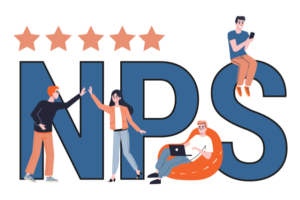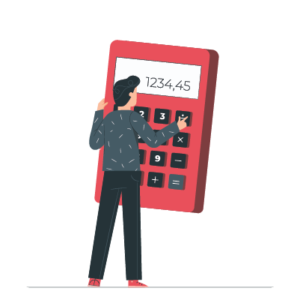With the advancement of online communications, there are plenty of ways to reach your prospects and customers.
However, to be profitable, companies must look at the projected Customer Lifetime Value (CLTV) of their customers so that they can find where they should focus on while determining their marketing budget.
Metrics like CLTV and Net Promoter Score (NPS) can be best tracked with Teleduce and Quickbooks integration.
To make more accurate profit predictions, you need to understand the value of long-term customer relationships.
With these metrics defining customer experience, the overall ‘tone’ of your brand improves.
By understanding and analyzing CLTV, you can know at which point customers become profitable.
This is essential for your marketing and retention programs, financial forecasts, sales targeting, and other strategic concerns.
It will also help you identify if you need any additional investment. This could be from a resource point-of-view required to retain customers or to support sales account management or most importantly, to optimize customer service.
This guide is mainly dedicated to understanding and utilizing customer lifetime value. You will also learn how you can track and improve CLTV with Quickbooks integration.
What is CLTV and NPS?
Customer Lifetime Value (CLTV)

Customer lifetime value (CLTV) is a metric that indicates the total value of the relationship that you have with your customers.
In simple terms, it tells you what your customers are worth to you. It predicts how much and how frequently your customers will spend. It will also indicate how profitable those transactions will be.
To grow CLTV, you should spend less on new customer acquisition and concentrate more on retaining customers.
Here are a few customer retention tips, afterall acquiring new customers costs seven times more to acquire a new customer than keeping an existing one.
- Use email marketing to keep your brand on top in the minds of your customers.
- Concentrate more on getting first-time buyers to purchase a second time. Once you succeed, they are up to nine times more likely to do repeat purchases in the future.
- Reward their loyalty by offering them special deals and discounts via email or SMS marketing.
- Try upselling and cross-selling to increase order value.
- Send personalized recommendations with email marketing campaigns. You can also send them useful content to make their life easier.
- Use automation to send your customers regular and timely updates and watch your CLTV steadily rise.
Pro-tip: Here is a guide on how does marketing automation work. Once you read this, you will be able to craft highly personalized customer experience that reduces friction and encourages purchase.
Net Promoter Score (NPS)

Have you ever asked your customers, “On a scale of one to ten, how likely would you recommend our brand to someone else?” You ask this to measure Net Promoter Score (NPS). It is a way to measure customer satisfaction in absolute terms.
Now how do you measure it? For the above question, if your customers respond with 9 or 10, they are considered loyal who will provide repeat business and even referrals (referred to as promoters).
If they gave you 7 or 8, they will probably go to competitors next time (referred to as Passive). If they gave you anything below 7, then they are unhappy customers. (referred to as Detractors).
NPS = Percentage of Detractors – Percentage of Promoters
How Do You Calculate CLTV?
Before you calculate CLTV, you need to get your data ready. You need to decide how far back you will look to extract your data. Usually, a period of five years is recommended.
- Data Segmentation: The first step involves segmenting the data by demographics, by-products purchased, by location using your lead management system CRM. This will help you get a realistic idea of the purchasing habits of your customers. This will also tell you which segment is performing better so you can focus on it.

- Frequency of Purchase: This is the next step where you have to review your customer data and find the frequency of purchase. This means checking repeat sales, upsell and cross-sell opportunities closed. This will also help you find out which of your customers like to return to you.

- Time Spent by Customers: Next review the data to find out how long your customers keep purchasing from you. For businesses with subscription, you can see how long your customers remain with you. Others can measure the time period between the customer’s first and last purchase.

- Calculating CLTV: CLTV= (Average customer sale) x (Average Number of Repeat Transactions) x (Average Retention Time in Months or Years of a customer)

What Can Customer Success Tell You About Your Company?
Customer Success is relationship-focused client management which ensures that your customers obtain their desired results while using your products or services.
With proper implementation of the customer success strategy, the outcome will be decreased customer churn and increased upsell opportunities.
Renewal Process

Every time customers see the subscription option, they wonder, ‘Should I pay for this?’.
Understanding the health of the renewal process continues to be a priority for many businesses.
This means businesses that can manage renewal conversations grow faster and require less capital.
With Customer Success, you get insight, organization, and team which are required for successful renewal exchanges.
Churn Rate

Customer Churn rate is the percentage of your customers who cancel or simply don’t renew their subscriptions during a given time period.
Today positive and negative reviews flow around and decisions happen faster than ever.
For customer retention, you need to glean a wealth of valuable feedback from customers. This way customers will have no problems, which means there is no reason to leave.
Revenue

In the realm of accounting software, the Gainsight Pulse conference emphasizes that 90% of revenue is derived from Customer Success, as the expense of acquiring new customers far surpasses that of retaining existing ones.
Utilizing effective retention techniques can unlock higher growth and opportunities for upselling and cross-selling.
What is QuickBooks?
Quickbooks is a cloud-based accounting software for small businesses and self-employed people. It helps them to manage all their financial elements of their business such as invoicing, taxes, bills, reports, expenses, etc.
How to Integrate Teleduce-QuickBooks?
You will be able to drive all the relevant accounting information from QuickBooks into Teleduce using QuickBooks integration API.
This will provide you with more opportunity to focus on developing your business.
Bonus: If you already use Justdial for getting leads, check out this guide on how to make the most out of a JustDial lead extractor like Teleduce.
For Quickbooks desktop integration with Teleduce, proceed with the following steps.
Before starting, please note that you should already have an active QuickBooks user account to integrate it.
Step 1: Launch Teleduce and Click on the Integration Button
Launch Teleduce by visiting teleduce.corefactors.in. You will be able to see the Dashboard. From the left side menu, choose the ‘integrations’ button which is located at the bottom of the menu.
Step 2: Choose Accounting Menu From Third-party Integrations
Upon clicking the ‘Integrations’ button, you will be taken to the ‘Third Party Integrations’ page. From the horizontal tab menu, click on the ‘Accounting’ tab.
Herein you will find Quickbooks logo with a ‘Connect’ button. Once you click this button Quickbook integration services via a pop up opens.
Step 3: Quickbooks Integration
Once you click the ‘Connect’ button, a pop up opens which asks you permissions to connect Teleduce CRM wIth Quickbooks integration. Click the ‘Connect’ button.
This will allow Teleduce to view and update your Quickbooks data online right from this CRM.
Benefits of Integrating Teleduce With Quickbooks
Quickbook integration with an integrated sales and marketing platform Teleduce will help you to seamlessly manage the company as well as customer information.
Since both of these softwares are indispensable for your business, integrating them can change the way you do business.
By integrating Teleduce with Quickbooks, you get the best of both software along with these benefits which will help you improve your CLTV.
- 360-degree View: From Sales and marketing to purchase history, get a complete 360-degree view of how you handle your customers.

- Boosted Productivity: With Quickbooks integration software, now you won’t have to update your customer data in both systems. This will save time and boost productivity.

- No More Duplicate Data: This will also avoid duplication leading to greater accuracy and integrity.

- Central Data Storage: With the integration, all your customer and sales records will be in one central location. This will improve efficiency since there will be no switching software to glean data.

- Reduced Call Handling Time: It also improves customer satisfaction as your employees will be able to help them quickly without any call waiting or transfer.

- Real-time Sync: You will also be able to sync real-time inventory information with Teleduce. This way, your sales team will always work with the latest and most accurate information on both inventory and price.

Streamline your business process with Teleduce Quicklinks integration and improve your CLTV.
Manage your leads, customers, payments and invoices, all in one place. Get started with Teleduce today!







